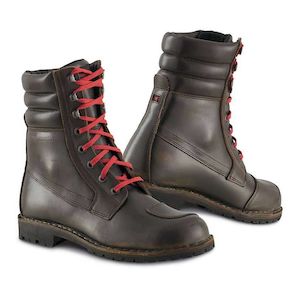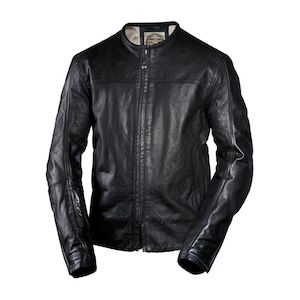If you asked me to sum up the Indian Scout in half a dozen words, here it is: American-built cruiser with 100 horsepower.
That’s what Indian lures folks in with. The question, of course, is whether or not the Scout delivers on its promise that it’s a thoroughbred. Is this bike well built and sturdy? Does it carry on the mission of the original Scout? Is it speedy and light? Will it be the cruiser that riders who shun a larger bike are looking for? I was excited — and skeptical — when I picked up our test Scout. Indian is claiming an awful lot.
The bike
Having ridden the Scout for thousands of miles, I experienced lots of first reactions to the bike, and every one went down the same way: “Is that the new Scout? Man, that thing is small!”
My own reaction was no different. This is an approachable bike. Though it’s no lightweight, it is so low. The seat is a shade over 25 inches off the pavement! One person who stopped me to look at the bike asked if she could sit on it, and she popped right onto it and gave me the seal of approval: a big, big grin. Sensing that she would make good story fodder, my ol’ riding pal Spurgie asked her how big she was (or wasn’t, as it turned out).
The answer: five feet, two inches, 115 pounds. And she didn’t look like she was intimidated by this bike one bit. And then I got back on it. I’m probably at the tall end of folks who would be comfortable on an unmodified Scout, but Indian does offer fit kits to extend the controls or bring them in closer to the rider.
As mentioned, Scout boasts 100 claimed horsepower and 72 foot-pounds of torque. This Scout was designed to accomplish the same mission as its namesake of 1920: be speedy, be nimble, and be less intimidating than the bigger Chief model, so its chassis dimensions make sense. In addition to that low seat height, the Scout measures 93 inches from the leading edge of the front rubber to the license plate, which is typical for a middleweight cruiser. For reference, a Harley-Davidson Sportster measures right around 90 inches or so. The Scout’s 558-pound wet weight doesn’t sound very light, but the bike’s low height made it feel more like a Honda Rebel. There really is that big of a gap between what it weighs and what it feels like. The Scout is short, low, and packs a performance punch.
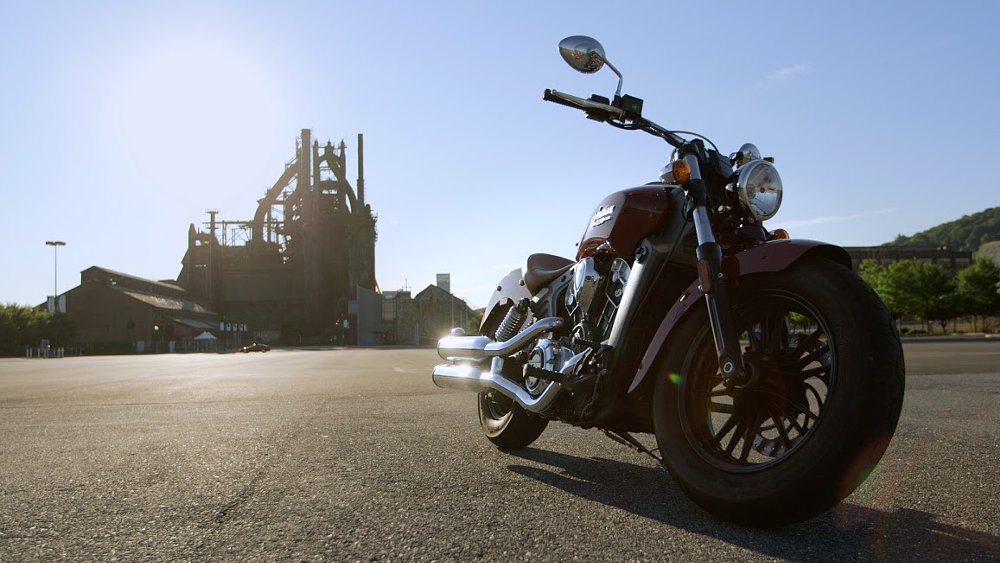
The punch is provided by a 69 ci (that’s 1,131 cc, for you enlightened folks on the metric system), liquid-cooled, fuel-injected, 60-degree V-twin engine with dual overhead cams. Make no mistake, a modern mill motivates this throwback cruiser. The engine and six-speed gearbox backing it up are of unitized construction. The Scout also sports an all-gear primary drive: there’s no chain transmitting power from the engine to the transmission.
Due to its throwback styling, it was also imperative that the Scout not wear a skinny front tire, as is the current norm. Back in the original Scout’s heyday, front and rear tires were usually the same size, and the new Scout is close. The front is a ubiquitous 130/90-16, and the rear a 150/80-16. Bias-ply tires are fitted. More on those in a bit.
The Scout has a single 298 mm brake rotor on each wheel. The front is squeezed by a two-pot caliper and there's a single-piston piece of hardware in the rear. The setup is basic, but it works.
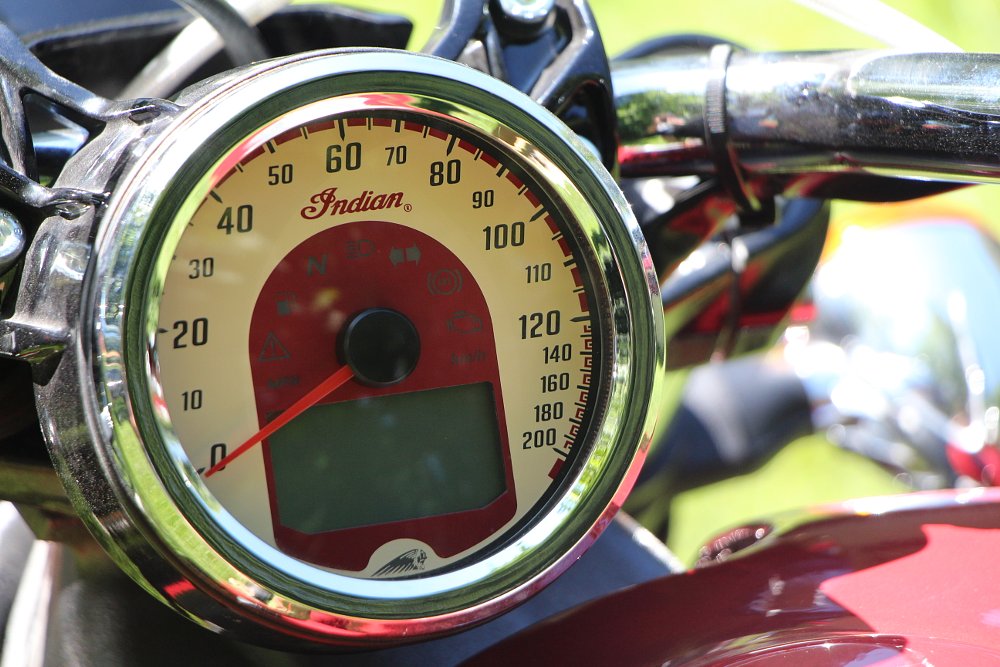

The Scout features a “smart-start” starting system. The starter button is a soft switch. The ECU receives the signal to start the bike, and takes over from there to prevent over- or under-cranking. The Indian may have the antique look, but she’s all modern under the tank.
If you’ve got eleven grand in your pocket, you have one more dollar than the Scout’s MSRP, assuming you’re looking for a gloss-black model. The red unit we tested, along with Thunder Black Smoke and Silver Smoke, the other two colors Indian offers, will set you back $300 more.
Testing the Scout
I had the Scout for about 2,000 miles — plenty of time to get to know the bike. I took it on a long haul to Ohio on back-to-back 400-mile days, commuted to work on it (60 miles each way), and did a few around-town runs to round out the mix.
Let’s not mince words about what I discovered on the first ride: The Scout rips! The powerplant dominates one’s experience of the Scout. The machine just revs for days. The transmission was no worse. Minimum input effort was required to change gears, and missed shifts simply didn’t happen. Interestingly, the transmission, when shifted without the clutch, was one of the smoothest I’ve used, either up or down, so if you’re a hot-rod type who beats your machine, the Scout makes it easy.
I loved how flick-y the Scout felt. I was apprehensive about a bike that was supposed to be a light, fast cruiser sporting fat front rubber, but I was dead wrong. The bike is downright graceful, due to a few moves the Scout design team made that I’ll get to in a bit. The Scout was behaved and relaxed when I was concentrating on getting from point to point, but she was ready to boogie when I wanted to put the hammer down. Despite the fact that “low” is the Scout’s game, it has better cornering clearance than a Harley-Davidson Sportster, and the only times I scraped pegs or peg mounts was when I was intentionally being stupid on off ramps.
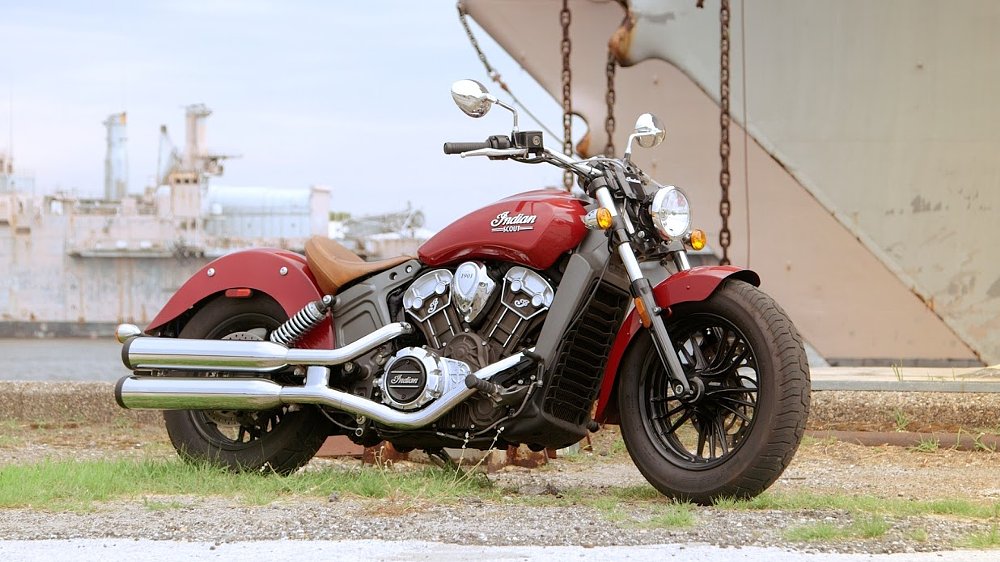
Fuel mileage was pretty good, too. I saw 43 mpg with limited tomfoolery on my part. Range was a bit worse, though. The tank holds just 3.3 gallons. I ran for about 20 miles with the fuel light on at one point, and the tank accepted 2.8 gallons of fuel, so I am not certain how much of that 3.3 gallons can actually be picked up by the fuel pump. I’ll put it to you this way: The only time I was not nervous about my range was on my Ohio jaunt, because I had an MSR bottle full of fuel lashed to my pack.
The bike was remarkably sturdy. Other than basic bike setup, all I did was re-glue a grip that was coming off. I did lose a muffler cap bolt, too, but our test bike had 3,000 miles on it before I got it, and I rode the snot out of it for 2,000 miles. Even if those shortcomings were Indian mistakes, they are very forgivable ones. Maintaining the Scout should be about average. Like metric cruisers, engine and transmission oil is shared, so that cuts down on a fluid change when it comes time to service the bike, but valves are adjusted by shims under buckets. That will be a fairly labor-intensive job. All in all, though, there’s nothing particularly exotic here, so new owners shouldn’t get any nasty repair surprises in tools, time, or costs.
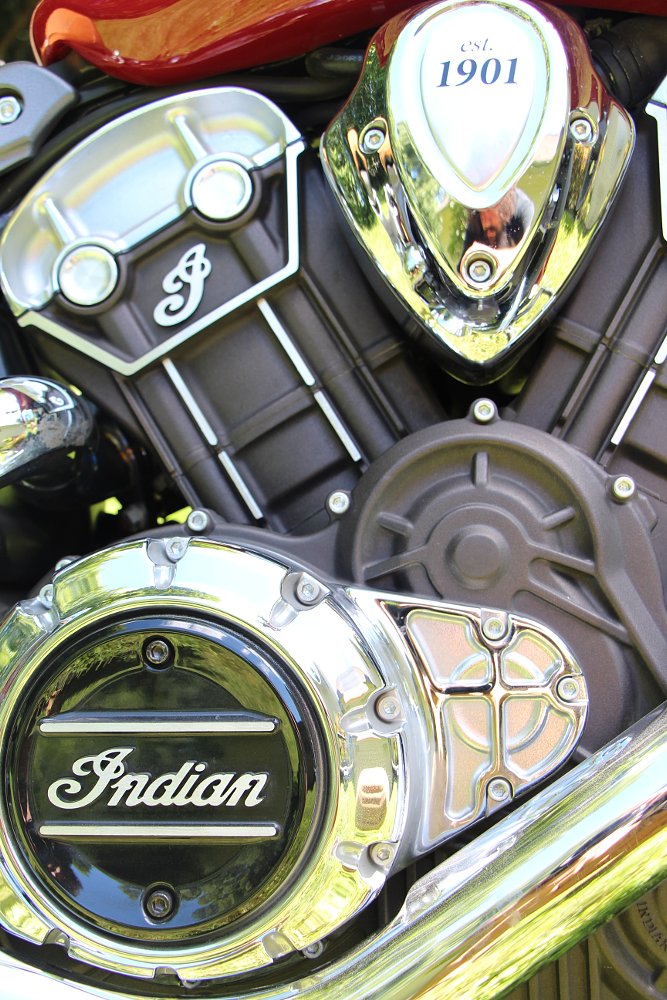
Scout highlights
The Scout flat-out hauls the mail. This bike gets up and moves. It’s a sleeper. I crept up on quite a few bikes, and then showed them what the new Indian Scout taillight looks like. The engine revs to the moon; pin it and bang the rev limiter. Fearless Editor Lance’s notes said, “Where the hell are the redline and rev limiter on this bike, anyway? With the digital tach, how are we supposed to know?” I never shirk my journalistic duties, so I began testing. There’s a soft limiter at 8,300 rpm. I found it. Many times. It was fun.
I was appreciative of the liquid cooling, too. I never even thought twice about sitting in traffic. I will say, the engine kicked up quite a bit of heat onto me. Other than that one negative, I can say that the engine was absolutely on point. My pants dyno says the Scout will flat-out eat a Sportster’s lunch.
When it came to stopping duties, the Scout was no less impressive. The one- and two-piston calipers don’t sound groundbreaking, but the brakes were grand. Lever feel is incredible and the rider gets loads of braking feedback. The rear pedal requires a bit more force than the front, which I think is just fine. My feet are capable of a lot less finesse than my paws are. Braided stainless lines front and rear contribute to the upscale feel of the Scout, and the beefy, cast lever resists flexing and also looks markedly more substantial than a cheaper-to-produce item. It’s a minor detail, but the Scout buyer is likely the sort to notice — and appreciate — attention to niceties like this one. Happily, for 2016, red Scouts will have an option to be upgraded to ABS. That will bring the cost up to $11,999.

The steering and handling are also superb. The engineering really shines here. So many times when I was riding this bike did I marvel at how well matched the components were to one another. Normally, I detest fat-front-tire bikes for anything other than long-haul touring duty. They feel heavy and ponderous most of the time. The Scout is atypical. The rake cast into the neck of the Scout’s frame is a mere 29 degrees, fairly shallow for a cruiser. The wheelbase is 62 inches, though, no doubt due to the wider angle of the engine’s vee. Coupled together, these factors are critical to the Scout’s handling. The rake keeps the wide front tire from feeling heavy and the wheelbase and tire width help prevent the small bike from feeling nervous at higher speeds.
And that chassis? Cast aluminum, stressed-member design. This is sportbike stuff put to good use for cruisin’ guys and gals. Aluminum is stiff, light, and strong. Casting evokes an earlier time period when cast parts were very much a part of motorcycling. Casting also allows the engineers to closely adjust thickness and thinness in parts — lighten ‘em up where ya can, and beef ‘em up in the areas that see a load. I did notice, though, that the control bosses are cast into the lower portion of the frame. A speedy low-side might be enough to total a Scout. Keep the rubber on the road, I guess.
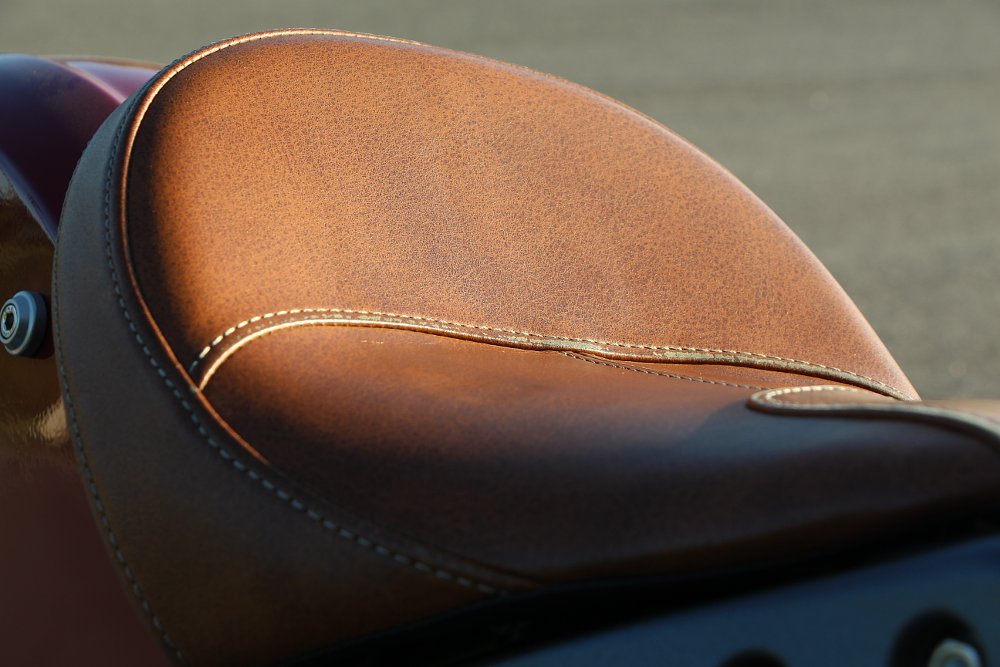
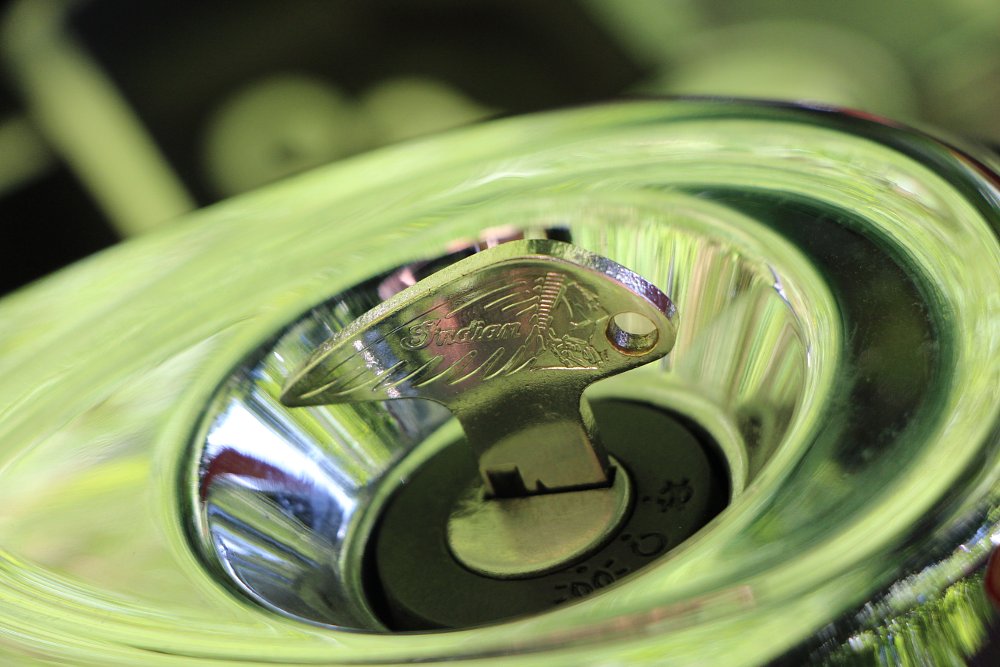
Scout lowlights
Let me be 100 percent clear: The downsides list on the Scout is short. This is a good, good bike, and it looks even better considering the fair price. Still, my job is to find the things that someone who is making a monthly payment would be irked by.
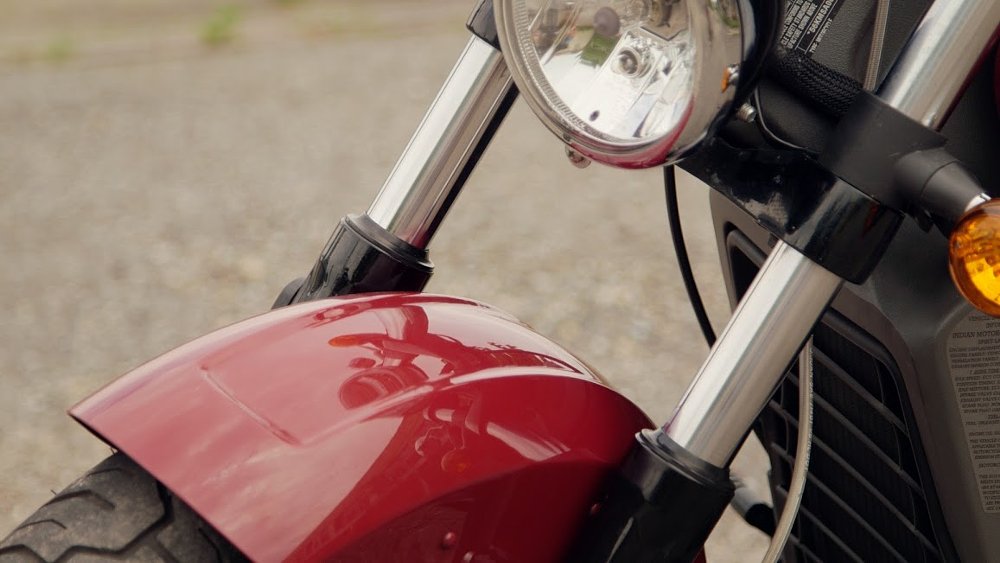
The first and most glaring shortcoming is the suspension. Let’s start with the twin rear shocks, which provide three inches of travel. The rear actually felt just right to me with some preload dialed in. However, I’m way heavier than normal human beings and I had gear lashed to the fender quite a few times. An average-sized rider is going to find the ass end of this bike too firm.
Moving up front, we have the exact opposite problem. The suspension is way too soft. And that’s not just me saying that. Fearless Editor Lance rode the Scout and said the same thing, and he’s like 170 pounds in wet clothes, cowboy boots, and a belt buckle. The travel up front is just under five inches and I found all of it. I bottomed it like crazy on bad roads, though Lance did not. He didn’t like the feedback, and I’m right there with him. Both of us are pretty sure that the softness and numbness from the front end are probably interrelated.
The inadequacy of the springs and fork fluid up there was made all the more painful by the riding position and bars. Your feet are far enough forward that you can’t put weight on the pegs to help soften the blow with your legs. If you see an upcoming suspension challenge, all you can do is grit your teeth and take it.
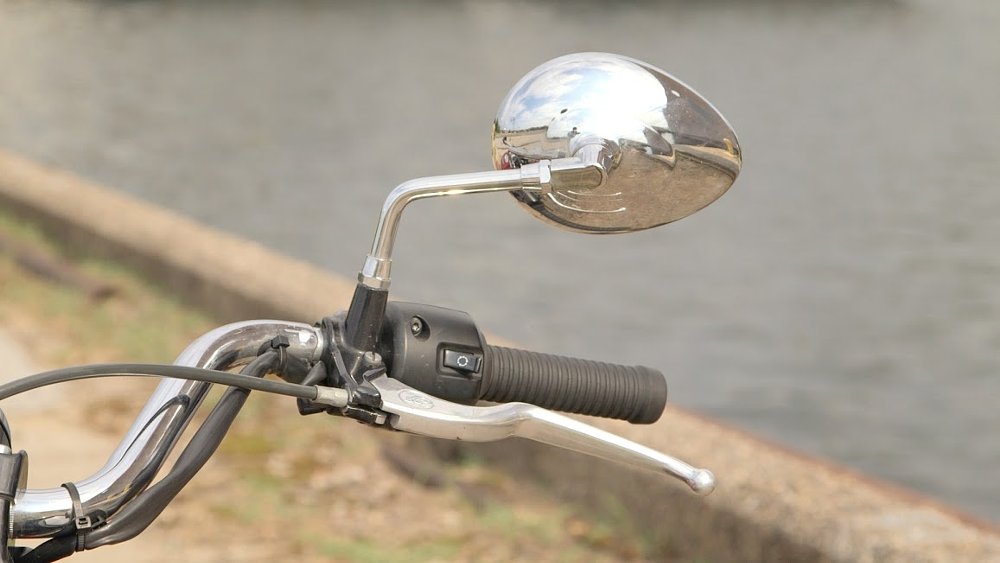
Another nit Lancy-pants found to pick was the Kenda-built tires. He rode the Scout in wet weather and said he lost traction at the front once and at the rear end twice under what he thought was modest braking and acceleration, and it killed his confidence. I personally loved the tires. They were uber-predictable. I broke the rear loose in second gear to start a rolling burnout riding home with a colleague one night, and I rode like a fool in the wet weather, and I felt the bike was very sure-footed. I wonder if our weight differential had anything to do with our different experiences.

My ass went numb much after a tank of fuel, but that’s par for the course on a cruiser with forwards. You’re locked in to a single position, and there’s not much you can do about it. You can’t even move your feet to the pillion pegs. (That’s the oldest trick in my book. Moving around helps me be comfy!) Why? The Scout does not come with factory pillion provisions. If you want to bring along your sweetie, take out your checkbook and start looking at the accessory catalog. This isn’t so much a lowlight as a characteristic of bikes in this class. If you want a long-haul machine, be prepared to modify the Scout or find a more suitable bike.
The competition
The Scout is a middleweight, American-built cruiser for the buyer who’s just beyond the entry-level offerings. If I can assume that the history and story of the brand is important to the buyer, then that means there is really only one true competitor to the Scout, and that’s the Harley-Davidson Sportster 48. The Sportster has an air-cooled mill, and the Scout is liquid-cooled. The Scout wins on horsepower, but the Sporty has a torque peak more than 2,000 rpm lower. The Indian does not offer ABS as an option in the United States for 2015, and the Sportster does. Both bikes offer incredibly good fit and finish, and the MSRP is nearly identical for the base gloss-black model of each. You’re not going to go wrong with either one. I give the edge to the Indian if you don’t want to spend a lot of time wrenching. If you can ride a pretty stock bike and be happy, the Indian is a big winner. It’s a fantastic bike that needs very little. The Sportster is going to have a much larger array of products to purchase in the aftermarket, but in my opinion, it’s also the bike more likely to need them.
If, by chance, the buyer is simply interested in a middleweight cruiser irrespective of where it is assembled, then the Scout is playing against the Suzuki Boulevard C90, Honda Stateline, and Star V Star 1300. Given that performance is typically not the deciding factor for buyers in this market, I’d wager that most purchasing decisions rest mostly on rider comfort and looks. Buying a middleweight cruiser is typically about finding a good, practical bike, and the bike that runs well and fits best is usually the bike that will end up having the most miles put upon it. If you’re shopping, here’s what you need to know: The Scout holds its own in the class. Go sit on one.
Conclusion
I think of the Scout as the best possible “step-up” bike: A new rider should crash his way through Season One on some beat-up turd, looking dorky the whole time. The Scout is the bike he or she should be saving for. The bike represents an excellent value. Engineering, heritage, and performance really do intersect in the Scout. This motorcycle reflects how thoughtfully Indian approached their interpretation of what a modern-day Scout should look like and how it should perform.
Indian’s really raised the bar with this bike. I wouldn’t have a negative word to say to anyone I saw riding a new Scout: This is a damn good bike.











